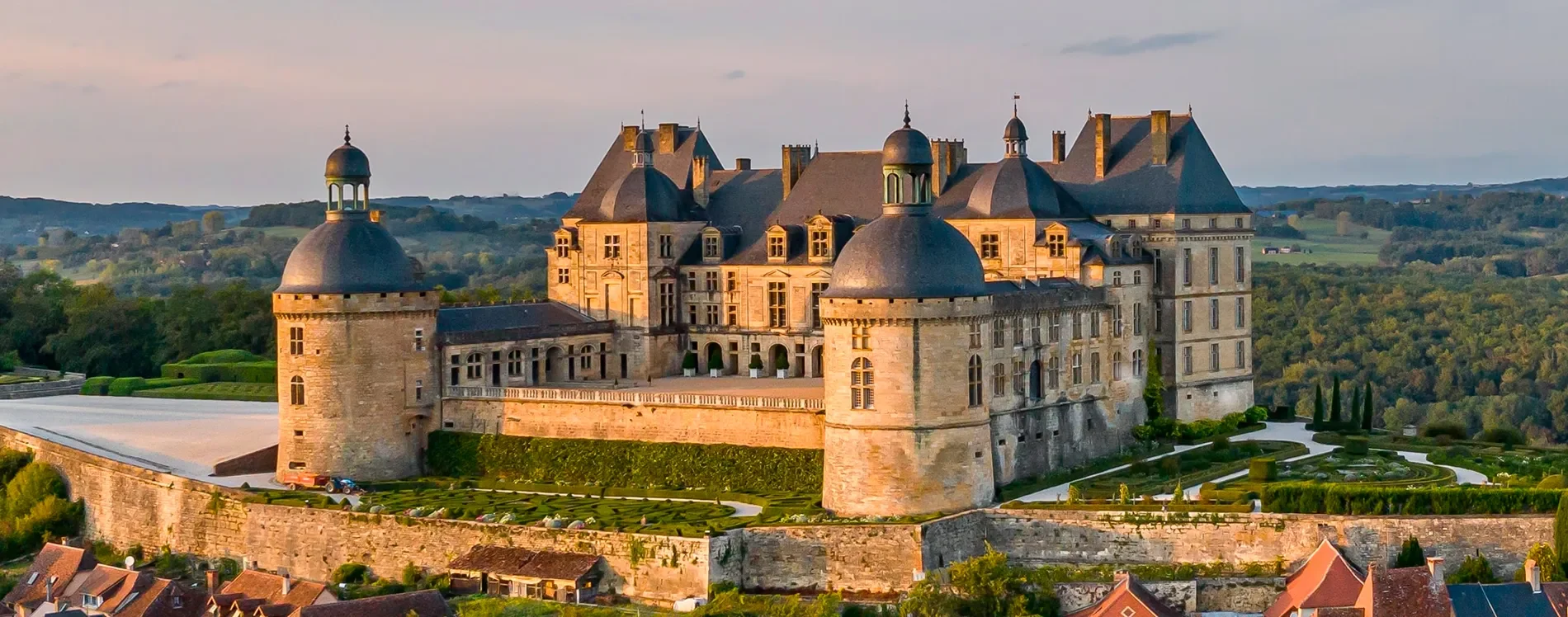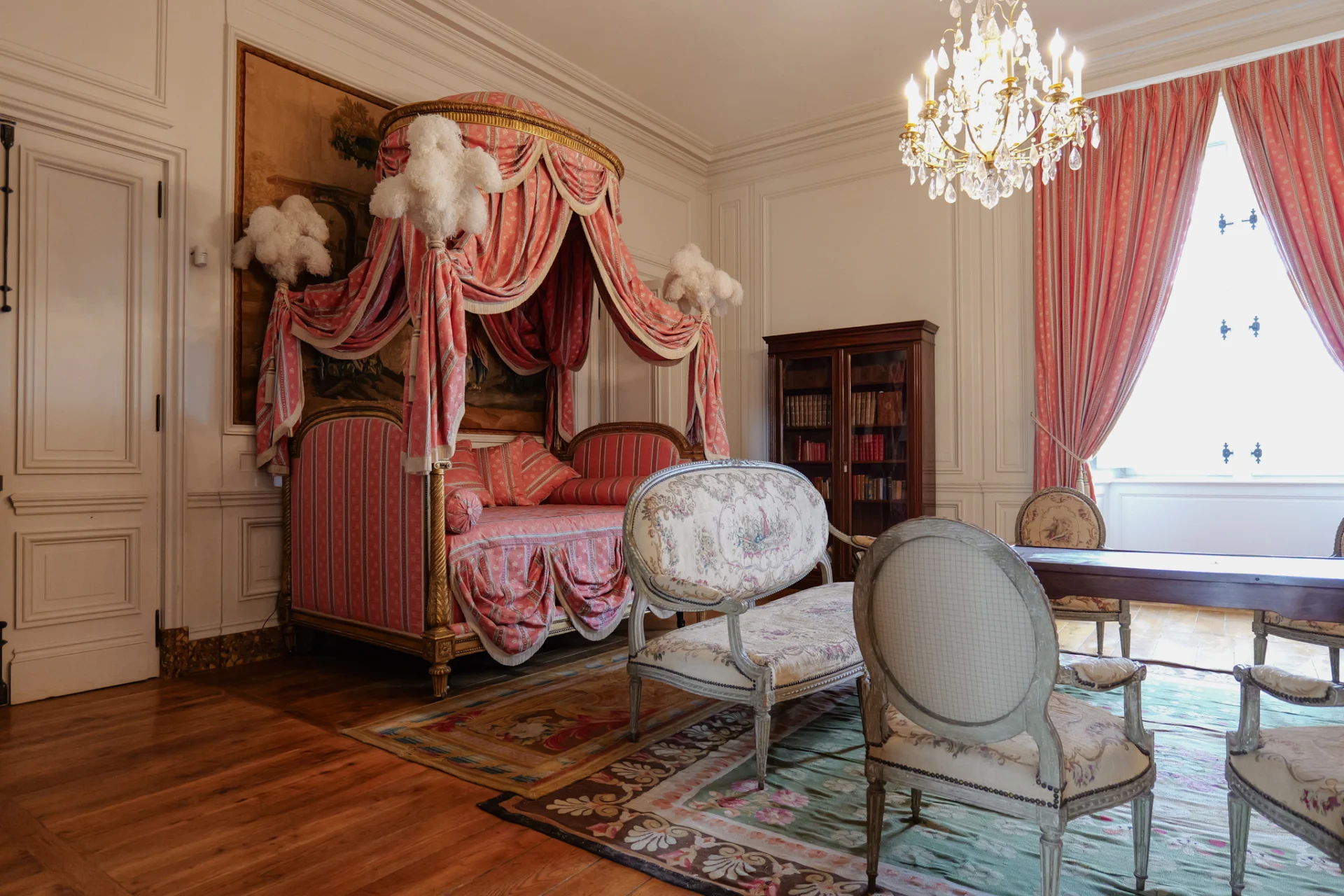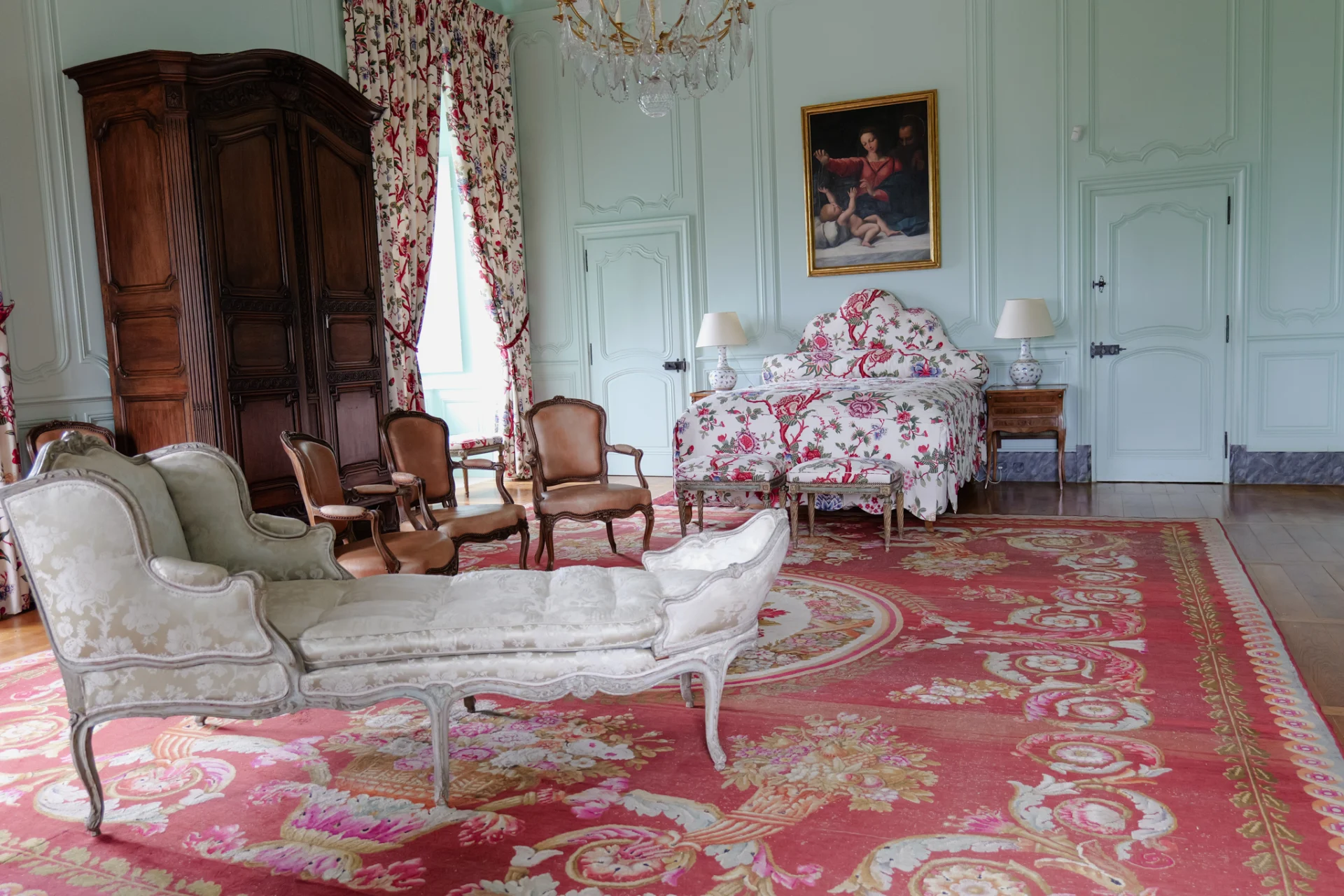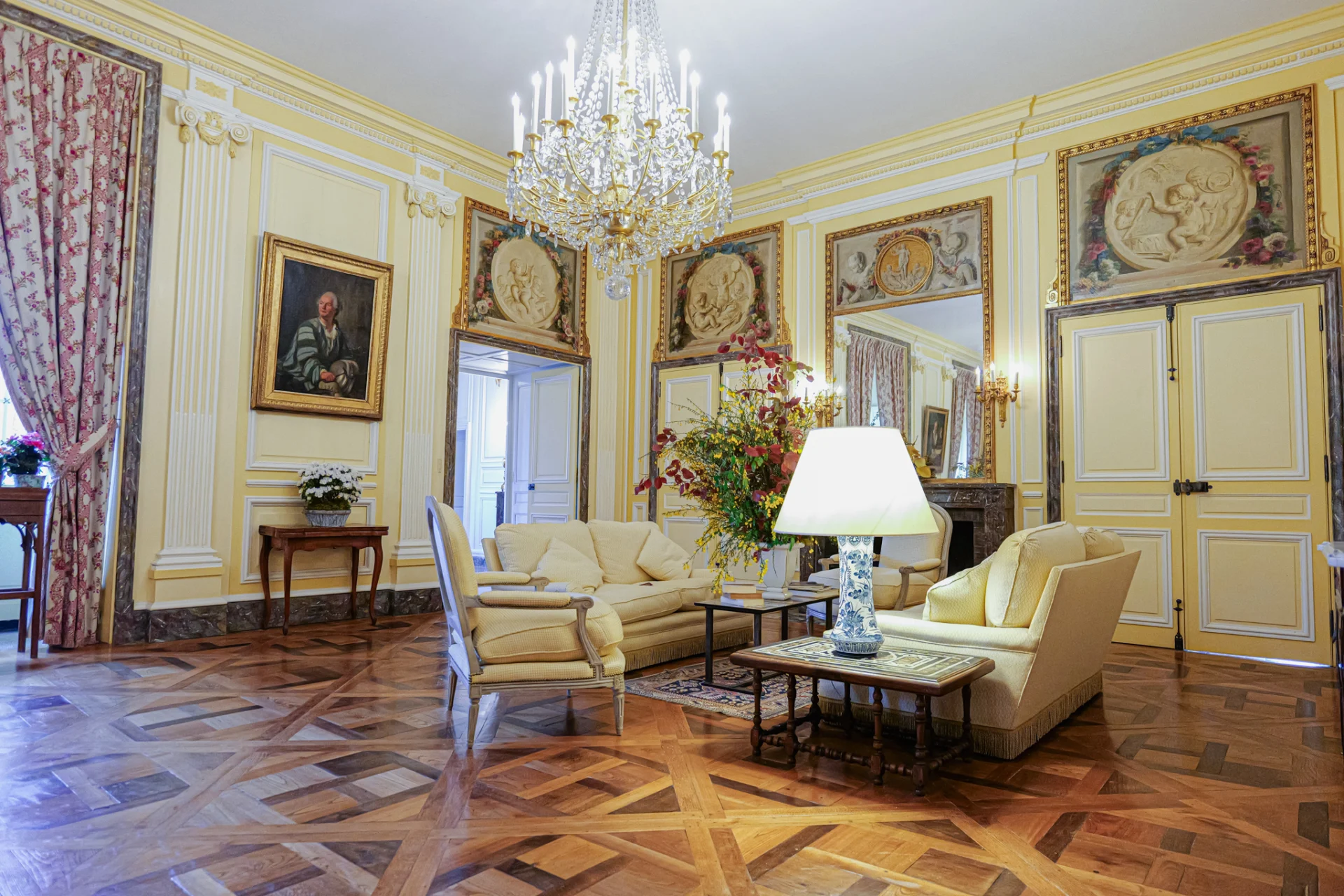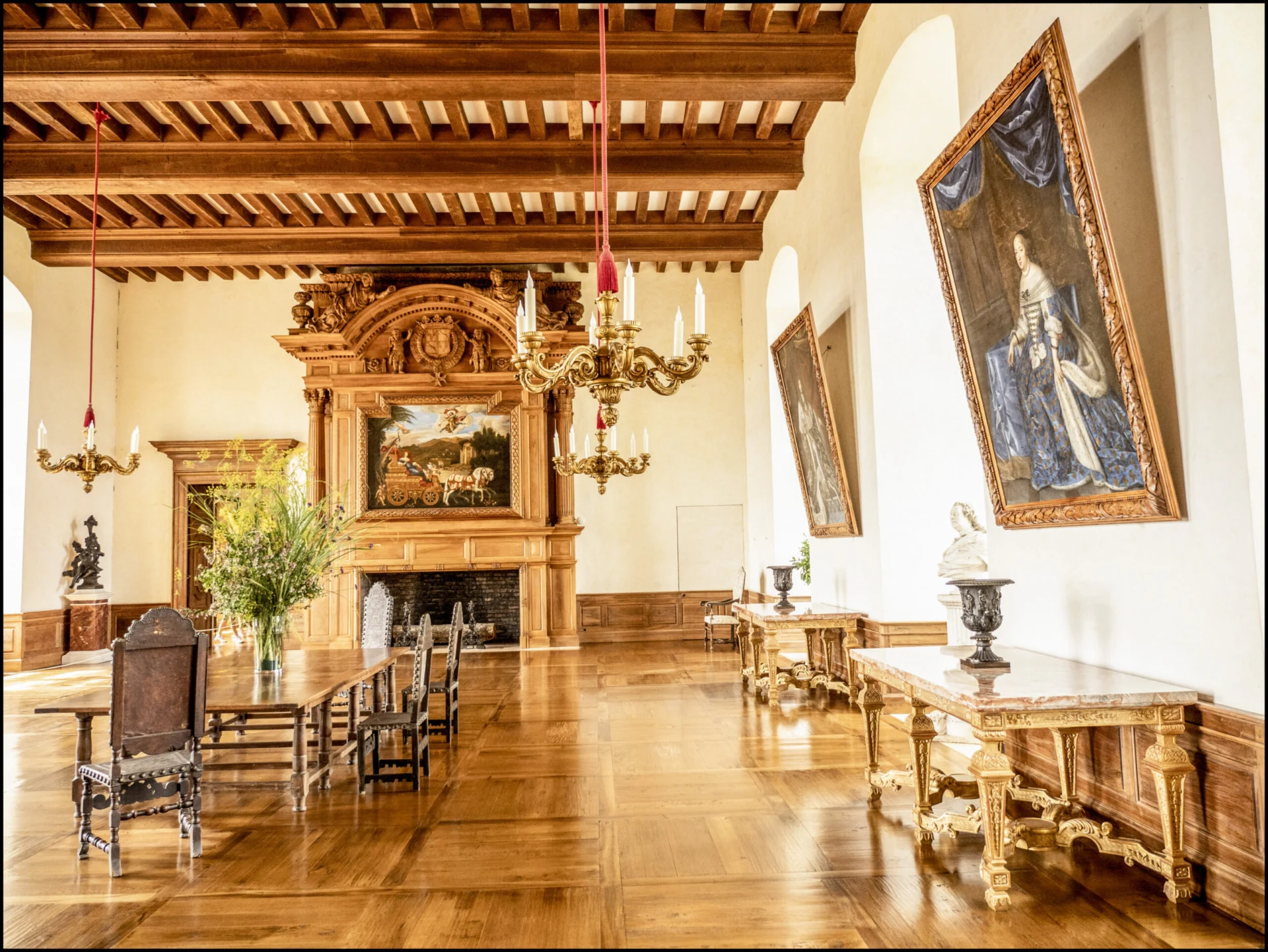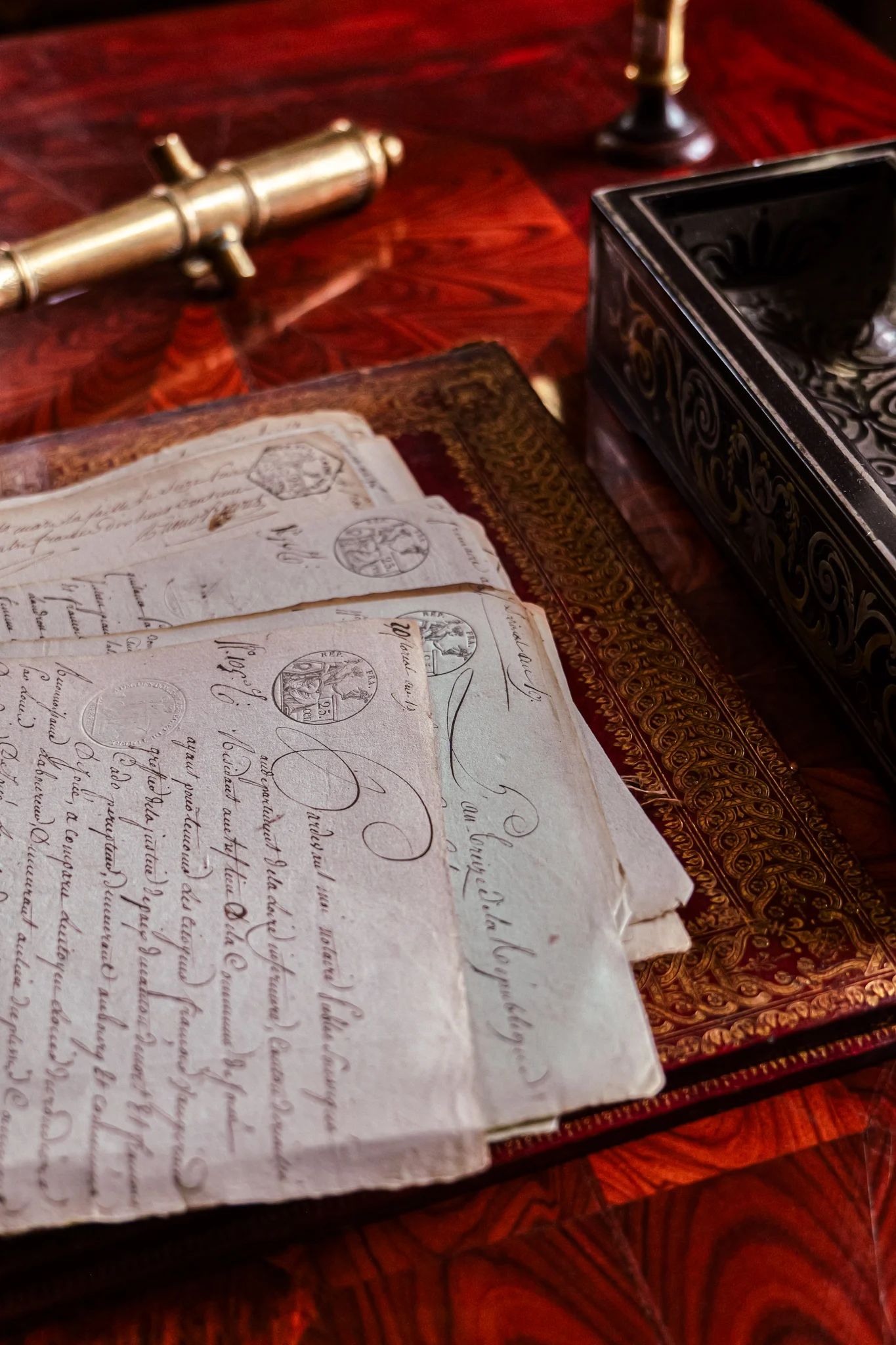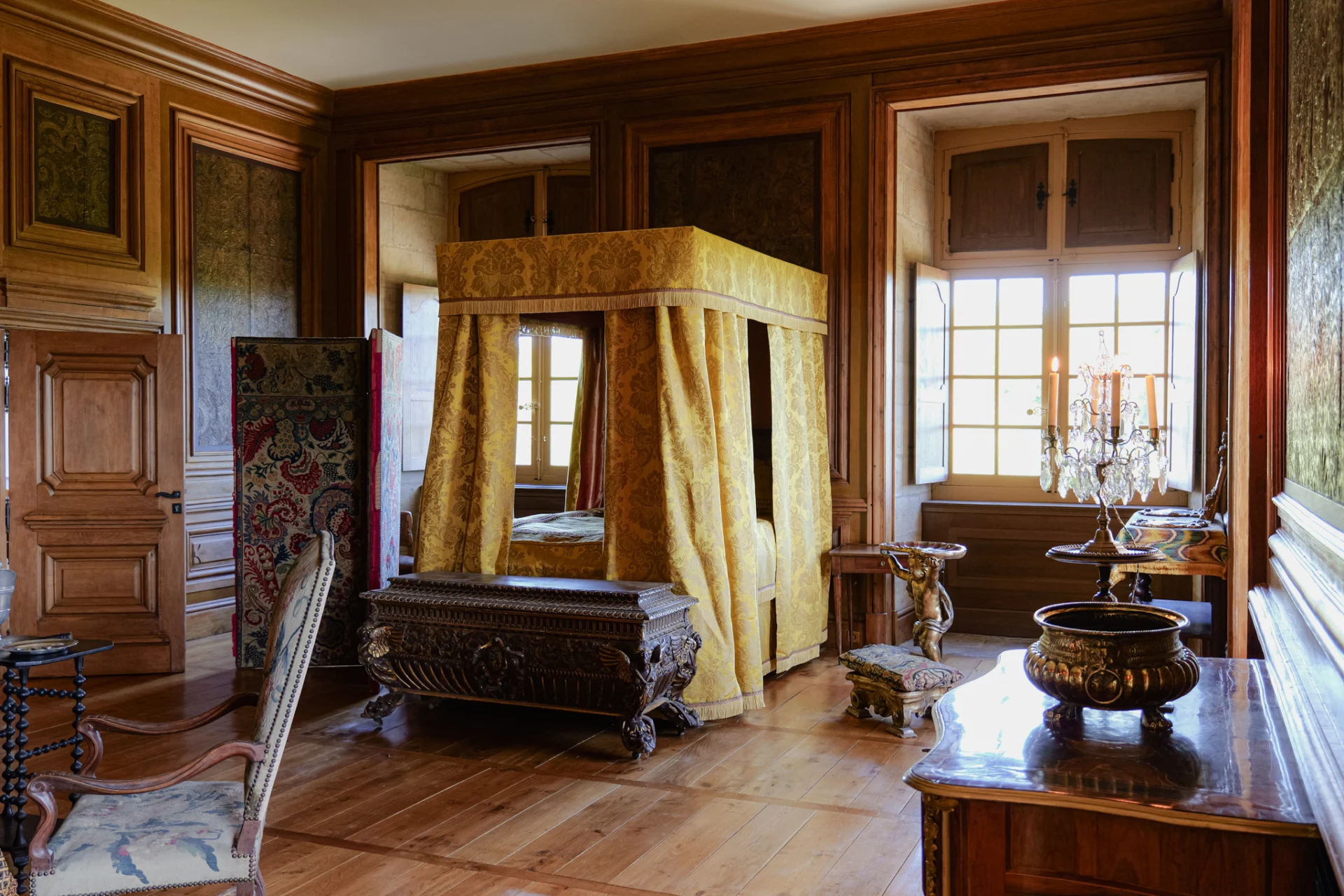Design office
Design office
Cannon foundries
Initiated by Jacques-François de Hautefort, the project to create foundries to supply cannons to Louis XIV's royal navy was implemented by his first cousin François d'Ajat de Hautefort. These were the Ans foundries, located 15 km from Hautefort. Once made, the cannons were transported by land to the port of Moustiers on the Vézère, from where they were shipped by river and then by sea to the arsenals at Rochefort.
The three "cordons bleus
If you look closely at the bust of Colbert, the portrait of Louis XIV and that of the Marquis of Hautefort, you will see that all three bear a Maltese cross suspended from a wide blue ribbon. This is the sign of their membership of the Order of the Holy Spirit, the highest distinction of the French aristocracy in the 17th century, similar to the highest grades of today's Legion of Honour. Jacques-François de Hautefort and Colbert were part of the same class of 1661. The distinctive blue ribbon worn by members of the Order of the Holy Spirit earned them the nickname "cordons bleus". The expression was later applied to the kitchen, no doubt because of the succulent lunches around which they gathered. Such was the renown of these meals that the expression "Faire des festins de cordons bleus" was coined. The term was later applied to the cooks themselves!
The Marquis of Hautefort in painting?
Painted by the Flemish artist Adam-François van der Meulen, this painting joined the Foundation's collections in 2025. It depicts Louis XIV's entry into Douai in 1667. Pay close attention to the figure on horseback on the right in red. He is welcoming Queen Maria Theresa. Who better to do this than the Queen's first equerry? It could well be that this figure is Jacques-François de Hautefort!
